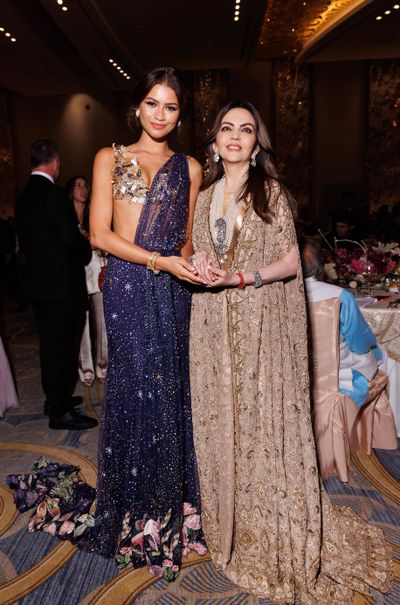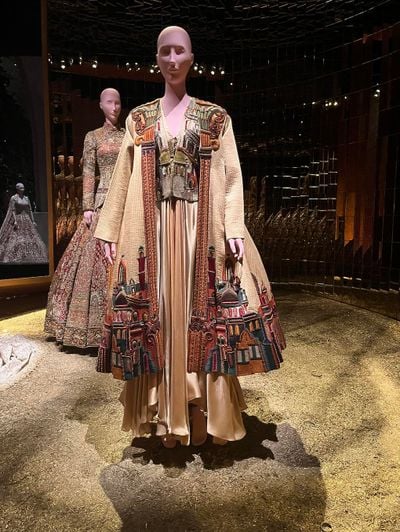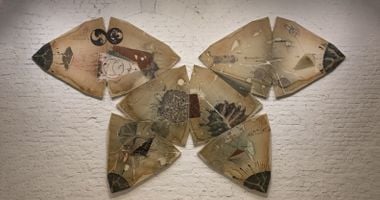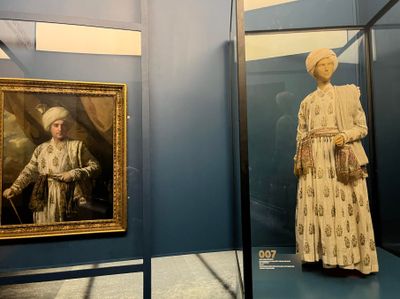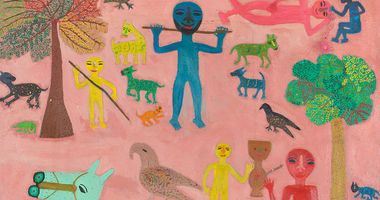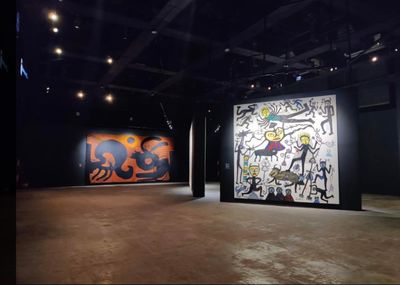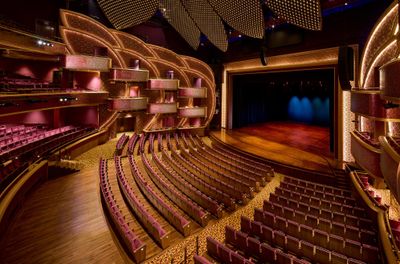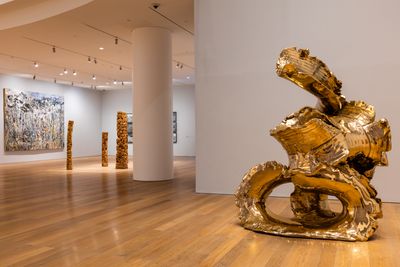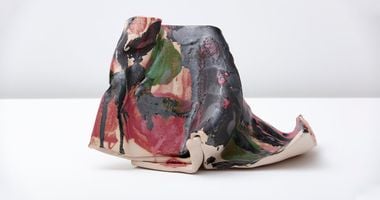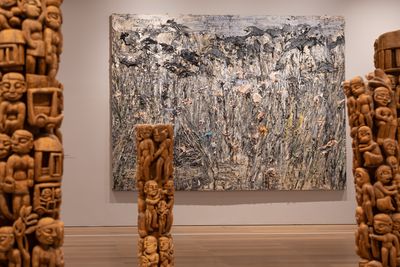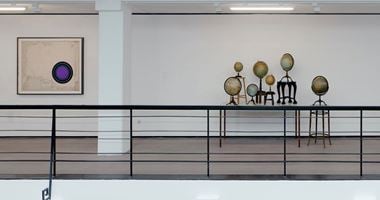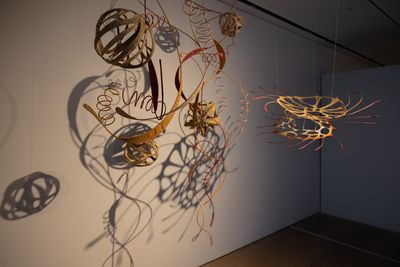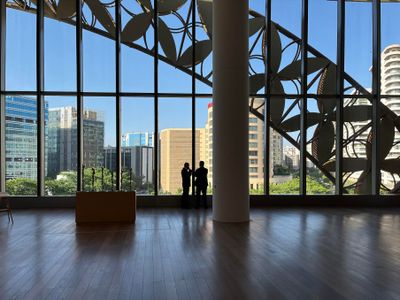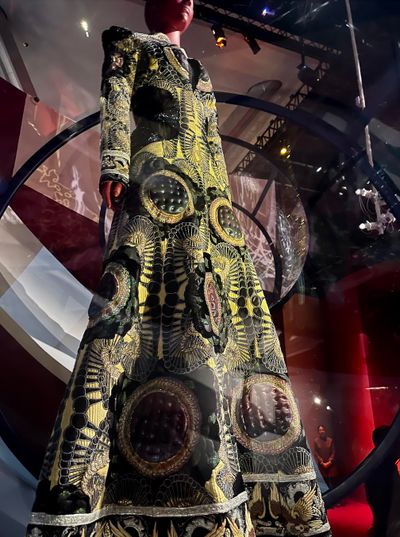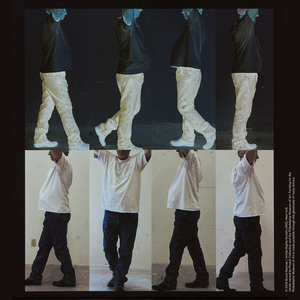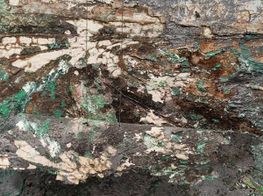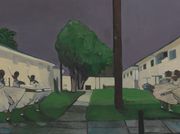Towards ‘New India’: Bollywood and Hollywood Unite at the Nita Mukesh Ambani Cultural Centre
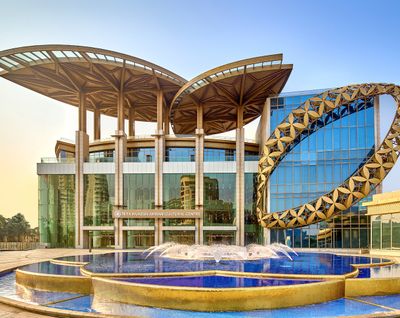
Nita Mukesh Ambani Cultural Centre. Courtesy NMACC.
It's hard to upstage Dior. But that's what the Nita Mukesh Ambani Cultural Centre (NMACC) did when India's first state-of-the-art multi-disciplinary cultural space launched in Mumbai on the heels of Dior's pre-fall show at the iconic Mumbai landmark, the Gateway of India.
Bollywood and Hollywood icons—not limited to Shah Rukh Khan, Priyanka Chopra, and Zendaya—attended the NMACC's opening weekend (31 March–2 April 2023), since described as India's Met Gala.
The highlight of three inaugural shows is undoubtedly India in Fashion: The Impact of Indian Dress and Textiles on the Fashionable Imagination (3 April–4 June 2023), curated by Vogue's global editor-at-large Hamish Bowles and exquisitely designed by opera director and designer Patrick Kinmonth with architect Rooshad Shroff.
Exploring the influence of Indian costume, textiles, and embroideries on European and American fashion across the centuries, India in Fashion's gala opening—where Gigi Hadid stole the show in an Abu Jani-Sandeep Khosla-designed gold-bead zardozi embroidered cropped-sleeve jacket-blouse and ivory chikankari sari—positioned Dior's 30 March show as an NMACC warm-up event. If not an extension to the history that India in Fashion chronicles.
Bowles describes India in Fashion as the 'complicated and layered history of admiration, appropriation, exploitation, and celebration' that has defined India's impact on Western fashion since the 18th century.
A couple of mid-1700s designs are among some 140 exhibits loaned from international museums and private collections, including garments created by Christian Dior, Yves Saint Laurent, Cristóbal Balenciaga, and Elsa Schiaparelli. There's a European overdress made from chintz fabric—hand-printed, painted, stained, or glazed cotton—and an embroidered muslin jama, shawl, and patka worn by Captain John Foote in an 18th-century painting by Joshua Reynolds hung next to the ensemble.
These historic artefacts emphasise the asymmetries of power coded into the use and appropriation of craftsmanship from the subcontinent. Starting with 'India's unequalled mastery of cotton and the global desire to dress in it that forever changed fashion systems and human history—ultimately inspiring the Industrial Revolution, the factory system, and European colonisation of India,' to quote Royal Ontario Museum curator Sarah Fee.1
One section dedicated to London's 1851 Great Exhibition points to this history in a space crowned by an architectural reference to the wrought-iron frame that supported the Crystal Palace's curved glass ceiling. Here, a court dress by the House of Worth constructed in Paris with gold zardozi fabrics created in India, was once worn by Lady Curzon, Vicereine of India from 1898 to 1905.
Yet India in Fashion does not dwell on colonisation, preferring to highlight exchanges between the subcontinent and the Western world that occurred through and beyond this historical chapter. The exhibition thus emphasises a reversal of course in the present, if not a more balanced osmosis.
Commissioned for the 1851 section, for example, is Anamika Khanna's 21st-century take on a cape and pencil skirt created with dupioni silk with zardozi embroidery and pearls, laying the groundwork for displays highlighting contemporary Indian designers and ateliers, from Manish Arora and Ritu Kumar to Raw Mango.
Among them is a trio of designs, including a show-stopping gown modelled after the form of a jellyfish, from Rahul Mishra's Spring 2023 couture collection, 'Cosmos'. Glittering embroideries and complex panelling was created by over 1,000 artisans from Indian craft communities, with whom Mishra has long collaborated; pointing to the Gandhian philosophies of circular design and cultural sustainability that Mishra follows.2
Mishra's circular approach emphasises the sentiments of India in Fashion, not to mention Dior's 2023 show, which was complemented by Mūḷ Māthī // from the roots (1–22 April 2023), presented by Dior at Mumbai's Snowball Studios.
Curated by Asia Society India Centre, monumental textile translations of paintings by Madhvi and Manu Parekh, interpreted by Karishma Swali, were handcrafted by the Chanakya School of Craft, founded in 2016 by the Chanakya Atelier to support women artisans. The textiles were first shown at Dior's spring-summer 2022 haute-couture presentation in Paris—part of Dior creative director Maria Grazia Chiuri's efforts to acknowledge the historical and contemporary links between Dior and Indian handcrafts.
Arguably, India in Fashion goes further by shifting focus to Indian designers at the forefront of reviving, elevating, and innovating artisanal traditions in the country, thus generating future horizons extended by the fact that the show is free for fashion and art students.
India in Fashion does not dwell on colonisation, preferring to highlight exchanges between the subcontinent and the Western world that occurred through and beyond this historical chapter.
This idea of redefining India's cultural place on the world stage and on its own terms is at the heart of the NMACC project, as foregrounded in Feroz Abbas Khan's The Great Indian Musical: Civilization to Nation (3–23 April 2023). The performance inaugurated the NMACC's 2,000-seat Grand Theatre, designed after Hollywood's Dolby Theatre, alongside two smaller theatres intended to incubate experimental performances.
The Great Indian Musical chronicles millennia of history in Bollywood style, with over 350 performers and more than 1,000 costumes designed by Manish Malhotra, whose Bollywood saris are on view in India in Fashion. But reviews among attendees to the premiere performance were mixed.
Some were irked by the omission of Islam when highlighting India's cultural and religious multiplicity, at a time when Hindu nationalism has taken root. Recently, India's National Council of Educational Research and Training removed chapters on the Mughal era from school textbooks, despite the Mughal influence on Indian culture, from the Taj Mahal's construction to the introduction of zardozi and chikankari embroidery. Not to mention sentences referring to how Gandhi's quest for Hindu-Muslim unity provoked assassination attempts by Hindu extremists.3
Others expressed pride around the musical's celebration of India's progress following independence from British rule in 1947, with its highlighting of Jawaharlal Nehru's legacy as India's first prime minister seemingly countering efforts to omit Nehru from school textbooks in 2016.4
'Cultural expression is not just about producing artefacts or productions that people consume—it is a very necessary condition of freedom,' Ranjit Hoskote explained.
The complex issues infused into the re-telling of India's story are in keeping with the new globalisms and nationalisms that are redefining the world today. The NMACC hopes to mediate that complexity through art and culture, as demonstrated by Sangam/Confluence (3 April–4 June 2023), an exhibition inaugurating the NMACC's four-storey Art House, co-curated by American curator Jeffrey Deitch and Indian cultural critic Ranjit Hoskote.
Referencing Indian polymath Rabindranath Tagore's humanistic vision of a nation defined by the multi-faceted wisdom of its peoples—as expressed in the transnational education system that Tagore founded at Santiniketan—Sangam/Confluence brings together works by 5 Indian and 5 international artists, among them Bhupen Khakhar and Lynda Benglis.
Works include paintings and Maria Khambas (traditional wood-carved memorial pillars) by Shantibai, a tribal Adivasi artist from Bastar in Chhattisgarh, among India's most militarised regions due to ongoing conflicts between the state and Maoist insurgents over the land's natural resources. Human bodies, flora, and fauna interlock to form intricate wooden columns that articulate the land as an embodiment of community, however fractured.
Presented nearby is Anselm Kiefer's The Shape of Ancient Thought (1996–2012): nine black-and-white photographs depicting ancient temples across the Indian and Greco-Roman worlds to highlight their relationality. The project was inspired by Kiefer's encounter with brick factories in Indian villages, which also informed The Fertile Crescent (2009), a black-and-white cartographic painting in the same gallery.
Kiefer has discussed the connections between ancient Greece and India, and the artist's role in exploring such synergies.5 These synergies are also articulated in India in Fashion, where a 1956 Dior silk-lame evening dress is paired with a 2020 crinkle-tulle drape dress by Tarun Tahiliani. Photographs show models wearing each garment within the grounds of an ancient temple, emphasising crossovers between the sari and chiton.
Such contextual and aesthetic interactions speak to Sangam/Confluence's foregrounding of India, the world's largest democracy, as a global space defined beyond its modern borders by historical and contemporary enmeshments and entanglements.
Works like Bharti Kher's Algorithm that Taps the Simple Act of Becoming (2019)—a circular, map-like composition of bindis on painted board—challenge conceptions of unified solidity in favour of material expansiveness, as do Ranjani Shettar's delicate sculptures, which have been given a gallery of their own. Naturally dyed muslin wrapped around steel frames compose the hanging sculpture In another time (2020); what looks like a collection of floating organisms casts shadows on the walls.
'For centuries, South Asia has been at the forefront of cultural multiplicity, making society proficient in breaking the language barrier time and again,' the exhibition text states. 'Sangam/Confluence uses this metaphor to think about how artists do not confine themselves to a singular art-making language, medium, or style—but, rather, range across a spectrum of possibilities.'
Emerging from this spectrum, as Nita Ambani suggested during the opening, is an evolving concept of 'new India'. The idea infuses the NMACC as a project funded by one of India's richest families, which both highlights the Ambanis' proximity to nationalist state power and their ability to shape the nation beyond state policy through the patronage of art and culture.
'Cultural expression is not just about producing artefacts or productions that people consume—it is a very necessary condition of freedom,' Ranjit Hoskote explained in conversation. 'It's where you can articulate unprecedented things and have the possibility to speak back to and against power in some cases; and I think that is the potential of this institution.'
With that in mind, the NMACC's launch represents a seismic shift. Not only for Mumbai's contemporary arts landscape—with its wealth of galleries doing the work on the ground, from Project 88 to Chemould Prescott Road—but for India as a whole. Hoskote agrees, describing the NMACC in the context of a history of globalism to which modern India has long been connected.
'I see this moment as part of that procession, of ways in which one participates globally,' Hoskote notes. 'Far from just becoming passive consumers of culture, I think that people who participate in this institution will find themselves strengthened as citizens.' Amid the spectacle, one local gallerist expressed a more cautious view: 'All we can do is wait and see.' Either way, the idea of what's possible has significantly expanded. —[O]
1 Hamish Bowles, 'India in Fashion: The Impact of Indian Dress and Textiles on the Fashionable Imagination', (Rizzoli, 2023): pp97.
2 David Lalmalsawma, 'Designer Rahul Mishra brings chic to Gandhi fabric', Reuters, 7 November 2009.~~
3 Suhasini Raj, 'Indian Textbooks Purged of Material Modi's Party Finds Objectionable', The New York Times, 6 April 2023.
4 Annie Gowen, 'Nehru who? Indian textbooks delete Nelson Mandela, English poets and country's first prime minister', The Washington Post, 6 May 2016.
5 Anselm Kiefer, 'The Shape of Ancient Thought', Getty Museum, Youtube, 2016.
